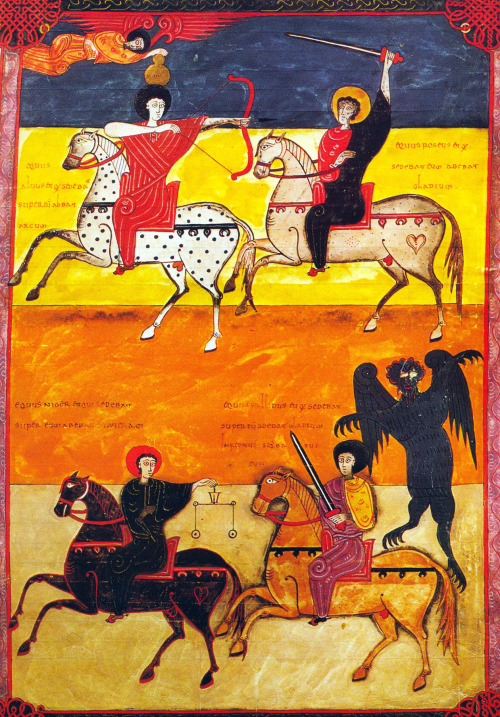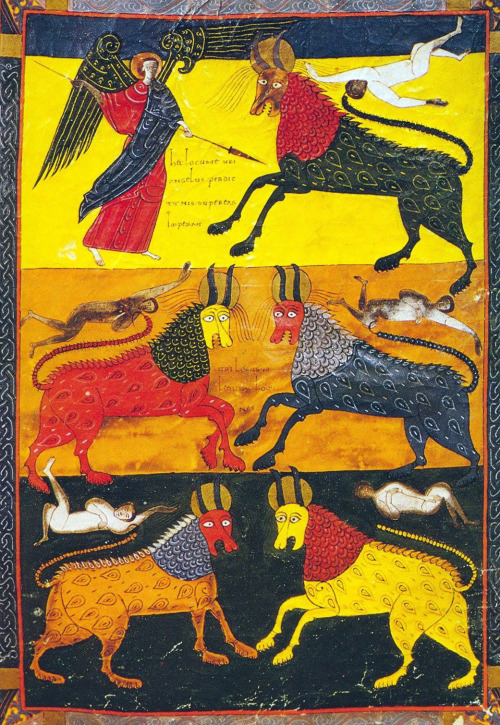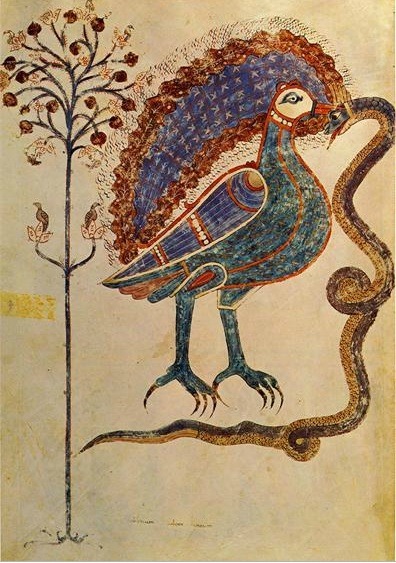#mozarabic
Facundus
Illustrations from a version of the Commentary on the Apocalypse, or the Beatus, c. 1047.
Post link
Bifolio illustrating a scene from Revelation 12- including the woman clothed in the sun (upper left), the multi-headed dragon who pulled down a third of the stars from heaven (center), and Satan bound in hell (bottom right)- from the Silos Beatus, c. 1091-1109. Image taken from ARTstor.
Post link
Folio depicting the adoration of Christ enthroned and the lifting up of St. John from the Spanish Silos Beatus, c. 1091-1109. Image taken from ARTstor.
Post link
Folio illustrating the combat of the bird and serpent from the Spanish Gerona Beatus, c. 970. Image taken from ARTstor.
This scene is characteristic of the mozarabic style, which makes use of bold, primary color palettes and stylized, patterned, and linear imagery which is influenced by Islamic artistic tradition in the Iberian peninsula.
Post link








